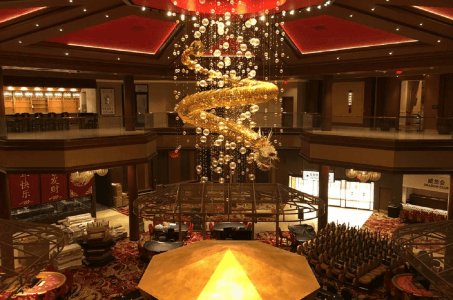Wynn Has Most Affluent Casino Patrons, According to Wells Fargo
Posted on: June 8, 2022, 11:14h.
Last updated on: June 8, 2022, 12:31h.
With the Consumer Price Index (CPI) residing at four-decade highs, inflation is a prime concern for casino operators. But Wynn Resorts (NASDAQ:WYNN) may have some immunity because of the affluence of its customer base.

In a new report, Wells Fargo analyzes household income trends of visitors to a variety of Strip, Las Vegas locals, and regional casinos. The study identified which operators could be vulnerable to reduced consumer spending caused by rampant inflation.
We analyzed average household income (HHI) data for visitors to … U.S. casinos to gauge which operators are most exposed to the lower/middle income customer, where food/fuel/broader inflationary pressures could reduce gaming’s wallet share,” according to the bank.
Based on customers’ average HHI, Wynn comes out on top at almost $109,000. That’s well ahead of second-place MGM Resorts International (NYSE:MGM). Customers of MGM, the largest operator on the Las Vegas Strip, sport an average HHI of $94,352, notes Wells Fargo.
Wynn is deriving benefit from its well-heeled clientele because its Las Vegas venues and Encore Boston Harbor are sources of strength when Macau – the operator’s largest market – remains littered with headwinds.
Some Surprises on Wells Fargo List
For experienced casino industry observers, it’s probably not surprising that Wynn customers are big earners. And it may not be earth-shattering news that MGM is second on the list and Caesars Entertainment (NASDAQ:CZR) is third, given the massive Strip footprints of the latter two.
The eye-opener on the Wells Fargo list is Red Rock Resorts (NASDAQ:RRR), which checks in at fourth with an average customer HHI of $82,279. That’s a testament to increasingly favorable demographics in Las Vegas, which has been flooded with Californians seeking a lower cost of living in recent years. All of Red Rock’s venues are located in the Las Vegas Valley and cater to locals.
The Wells Fargo analysts believe Red Rock has some insulation against inflation and views the shares as attractively valued.
“Shares are down 28% year to date, and RRR’s 8.6x 2023 estimated enterprise value-to-EBITDA is a 15% discount from historical levels,” said the analysts. “We see about $40 as an attractive entry point for RRR, with the potential impact from a slowing at the lowest end of its database likely minimal.”
Bally’s, Churchill Downs Could Be Vulnerable
Still, soaring consumer prices could crimp some gaming operators. Wells Fargo notes the average HHI for customers of Churchill Downs (NASDAQ:CHDN), Bally’s (NYSE:BALY), Boyd Gaming (NYSE:BYD), and Penn National Gaming (NASDAQ:PENN) ranges from $73,531 to about $75,000.
Those companies are considered regional operators, meaning they could be pinched by consumers looking to avoid high gas prices by not driving to casinos. Of that quartet, only Boyd has significant Las Vegas locals exposure. Bally’s and Penn operate one Las Vegas venue apiece.
“Given their regional exposure, Penn National, Boyd, and Caesars would likely be most impacted from a slowdown among lower-income households, though we believe much of this is already reflected in valuations/share prices,” Wells Fargo added.
Related News Articles
Ethics Commission to Seize Maine Casino Backer’s Financial Records
Genting Hong Kong’s Fate to be Decided By German Court Monday
MGM Japan Casino Spend Could Be $2.5B, Says S&P
Most Popular
Mirage Las Vegas Demolition to Start Next Week, Atrium a Goner
Where All the Mirage Relics Will Go
Most Commented
-
Bally’s Facing Five Months of Daily Demolition for Chicago Casino
— June 18, 2024 — 12 Comments -
Chicago Pension Mess Highlights Need for Bally’s Casino
— July 2, 2024 — 5 Comments
















No comments yet